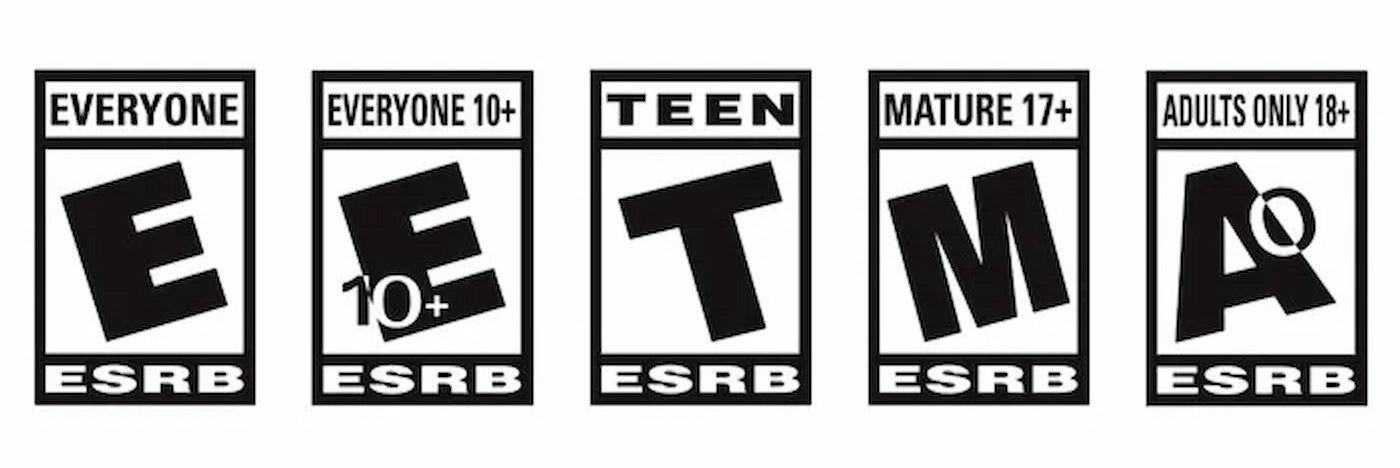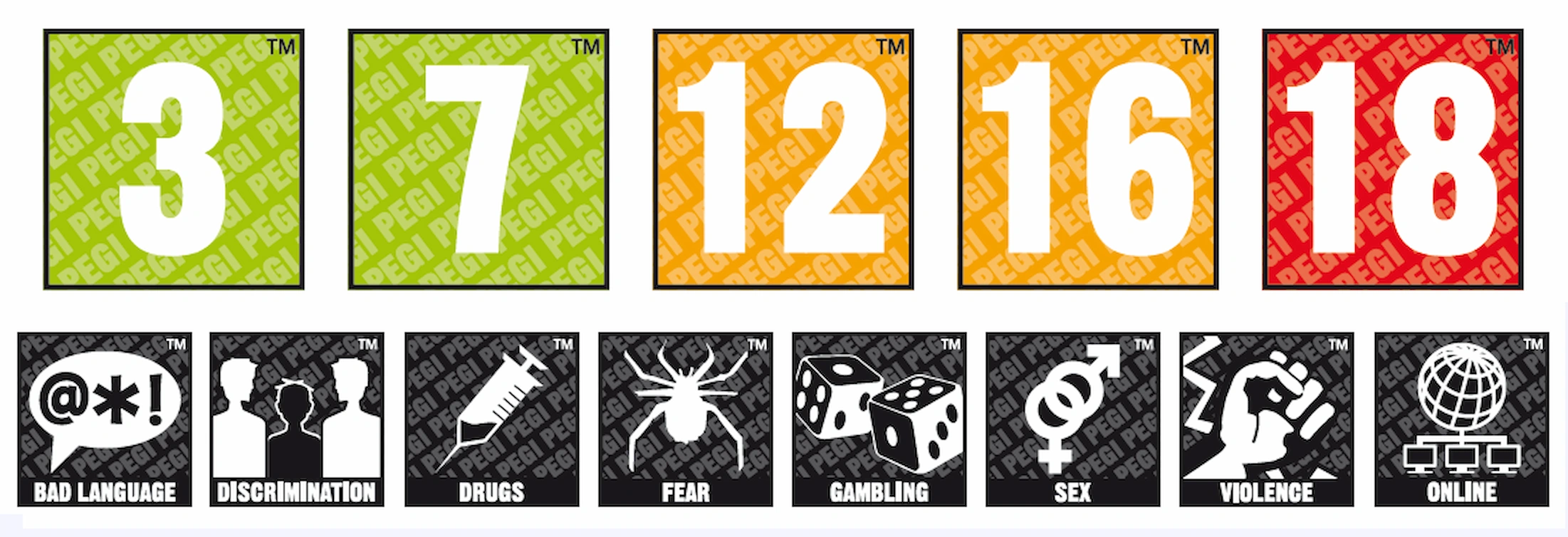
Age Ratings for Games: A Practical Guide for Game Development Startups
Age ratings (or classifications) are official labels that tell players and parents what kind of content is inside a game and from what age it is considered appropriate. They are used by governments and platforms to protect minors, by parents to make informed decisions, and by retailers to decide what they can legally or ethically sell. Without a proper rating, a game may be blocked from major stores, banned in certain regions, or refused by retailers.
The idea of formal age ratings for games wasn’t always there. In the early 1990s, violent titles like Mortal Kombat and Doom sparked public debate in the US about whether children were being exposed to harmful content. In 1993, the U.S. Congress held hearings on video game violence, which put heavy pressure on the industry to regulate itself before the government stepped in. The result was the creation of the Entertainment Software Rating Board (ESRB) in 1994, a self-regulatory body funded by the industry that introduced the now-familiar “E for Everyone, T for Teen, M for Mature” rating icons.

In Europe, things evolved differently. By the late 1990s, multiple countries were using their own national systems, which caused confusion for publishers and consumers. To unify the market, the Pan-European Game Information (PEGI) ****system was launched in 2003 with support from the European Commission. PEGI introduced standardised ratings (3, 7, 12, 16, 18) across most of Europe, alongside content descriptors like “violence,” “gambling,” or “bad language.”

Today, ESRB in North America and PEGI in Europe remain the most widely recognised systems, but they are not the only ones.
The Global Landscape
Different regions have their own classification bodies.
- North America – Entertainment Software Rating Board (ESRB)
- 🌐 https://www.esrb.org
- Europe (most countries) – Pan-European Game Information (PEGI)
- 🌐 https://pegi.info
- Germany – Unterhaltungssoftware Selbstkontrolle (USK)
- 🌐 https://usk.de
- Australia – Australian Classification Board (ACB)
- 🌐 https://www.classification.gov.au
- Brazil – Classificação Indicativa (ClassInd)
- 🌐 https://www.gov.br/mj/pt-br/assuntos/seus-direitos/classificacao-1
- South Korea – Game Rating and Administration Committee (GRAC)
- 🌐 https://www.grac.or.kr
- Japan – Computer Entertainment Rating Organization (CERO)
- 🌐 https://www.cero.gr.jp
Each of these boards works slightly differently, and historically developers had to apply to each one separately, which made global releases complex and expensive. This model made sense when games were primarily distributed on physical copies, since a publisher could plan region-by-region certification before shipping discs or cartridges. But once digital platforms like Steam, Xbox Live, and PlayStation Network emerged, games became instantly available worldwide. That shift made it much harder for small studios to navigate different rating systems at once. To address this, the major authorities came together and created a shared framework - the International Age Rating Coalition (IARC) - which now streamlines the process for digital releases.
The Digital-Only Shortcut: IARC
Instead of applying to each board, developers fill out one standardised questionnaire through the developer portal of the store they are publishing on. The system then automatically generates local ratings - an ESRB label for North America, PEGI for Europe, USK for Germany, and so on. The game receives an IARC ID that can be reused across platforms that participate in the system.
Most major digital storefronts - including Google Play, Microsoft Store (Windows & Xbox), Nintendo eShop, PlayStation Store, Epic Games Store, Meta Quest Store, Amazon Luna, and even Fortnite as a platform - are part of the IARC system. This means that by filling out the IARC questionnaire once, a developer gets ratings for all these ecosystems at once.
There are, however, two notable exceptions:
- Apple App Store – Apple does not participate in IARC. Instead, it uses its own simplified global age-rating system (4+, 9+, 12+, 17+), based on a questionnaire in App Store Connect. This rating is uniform worldwide and tightly linked to Apple’s parental control features.
- Steam (Valve) – Steam is also outside IARC. Instead of adopting PEGI/ESRB/USK ratings automatically, Valve relies on developers to fill out a Steamworks content survey. Based on the answers, Steam applies age gates (for example, requiring users to log in and confirm age before viewing the game page). Steam generally accepts games without official ratings, though in some countries (like Germany or Australia) a lack of local certification can still cause restrictions or takedowns.
Content Guidelines: What IARC Will Ask You
The IARC questionnaire asks developers to disclose specific types of content. The answers determine how strict the age rating will be across regions. The main categories include:
- Violence - Any depiction of harming humans, animals, or characters. Shooting firearms at realistic people will trigger a higher rating. A sci-fi game where you shoot lasers at robots may still count as violence but usually results in a lower rating, as it is more fantastical and less realistic.
- Sexual Content and Nudity - Includes sexual acts, partial or full nudity, suggestive themes, or sexual dialogue. A character in swimwear is usually acceptable for younger audiences, but nudity or sex scenes will result in high age restrictions.
- Language - Strong profanity or slurs raise the rating. Mild exclamations (“heck,” “damn”) often remain acceptable for lower age categories, while frequent use of harsh language pushes the game into teen or mature ratings. This category does not apply to online player communications in multiplayer games, which are rated separately under Online Interactions section.
- Gambling - Any simulation of betting or casino mechanics. Allowing players to place bets on horse races or use slot machines counts as simulated gambling and usually increases the rating. Loot boxes may also be flagged depending on jurisdiction.
- Drugs, Alcohol, and Tobacco - Showing characters smoking, drinking, or using drugs raises the rating. If it is central to gameplay (e.g., brewing alcohol as a mechanic) the impact is stronger.
- Horror and Fear Themes - Frightening characters, horror atmosphere, or sudden jump scares can affect the rating, especially for younger children.
- Discrimination or Hate Speech - Games that contain or allow discriminatory content will be flagged.
- Online Interactions - If your game allows players to interact (chat, exchange content, voice, or video), you must disclose it. This disclosure usually comes with a disclaimer (for example, “Online Interactions Not Rated by the ESRB”) to inform parents and players that user-generated communication is not covered by the age rating.
- In-App Purchases - If your game has optional purchases, subscriptions, or loot boxes, this must be disclosed.
Practical Examples from IARC Questionnaires
- Unrealistic substance on a fantasy NPC: If, for example, your game shows sparks flying out of a robot when attacked, you should select that your game includes Violence against anything other than humans (such as fantasy creatures, robots, or vehicles). The questionnaire will then ask about the level of blood/gore - in these cases you should typically answer Mild/Limited. Similar logic applies if oil leaks from a damaged mech: it is treated as fantasy violence rather than realistic gore.
- Weapons without violence: The mere presence of weapons in a game does not automatically make it violent. What matters is how the weapons are used. Decorative or non-functional weapons are not considered violence. For example, a sword hanging on the wall or a laser tool used only for mining would not count. However, if they are used to harm humans or realistic animals, this counts as violent gameplay. The questionnaire has several questions in the Violence/Gore section that allow you to describe the context, such as whether the weapon is only decorative, used against fantasy robots, or employed in realistic combat scenarios.
Physical Distribution: When IARC Isn’t Enough
The picture changes if a developer wants to release physical copies. Retail distribution requires a “traditional” rating certificate from the relevant board, and IARC is not accepted for this purpose. As examples, both ESRB and PEGI charge fees for physical certification which can cost several thousand euros, depending on size and platform. This means indie studios planning only digital releases can rely on IARC, but those aiming for boxed copies need to budget for certification.
Best Practices for Indie Developers
For small studios, the key is to use the IARC system whenever possible. It offers a unified, no-cost way to meet platform requirements and ensures compliance across most of the globe. The main responsibility is to complete the questionnaire honestly and thoroughly. If the disclosures are incomplete, the game may be reclassified, removed, or even trigger compliance issues.
If you do plan to go into physical distribution, start the process early, since certification takes longer and adds costs. Also remember that new content, expansions, or DLC may need re-evaluation.













